Enab Baladi’s Investigation Team
Murad Abdul Jalil |Dia Odeh | Mohamed Homs
On a podium inside the Palestinian city of Gaza, and during the twenty-fifth commemoration of the launch of Hamas Movement on December 8, 2012, the former Head of Hamas Political Bureau, Khaled Mishaal, and the current Head of the Office, Ismail Haniyeh, stood before a crowd of hundreds of people raising the flag of the Syrian revolution, to be a clear declaration of severing relations with the Syrian regime and standing by the peaceful demonstrators.
Political relations between Hamas and the Syrian regime have been unstable since the movement’s establishment. They started with the hesitation of opening Damascus doors in front of them in the era of former President Hafez al-Assad in the 1990s; then, it gradually progressed, reaching the stage of flourishing but ended with a break under the rule of Bashar al-Assad.
The Syrian regime had provided support in various areas to Hamas, securing the movement’s political stability and military development. With the outbreak of the Syrian revolution in 2011, the movement tried to maintain a balanced relationship with the regime, but it was unable to control its positions and it had often-conflicting statements.
Enab Baladi will monitor in this file the change of the relationship between the Syrian regime and Hamas during the revolution, the reasons that led the movement to move out of Syria and lose its biggest supporter in the region, in addition to foreseeing the future of the relationship between the two sides, amid Hamas’s conflicting statements about the return of the relationship.
Permission from the father and prohibition from the son
Hamas in Syria between al-Assad the father and al-Assad the son
The relations between Hamas and Damascus were characterized by coldness in the period following its establishment, amid hopes and attempts to open offices of the movement in the Syrian capital, until the appointment of its first representative in Damascus, Mustapha al-Laddawi, in mid-1991, who demanded the opening of an official office of the movement. The Syrian regime did not accept the demand at the time, and asked the official to practice his work from his office away from the media.
| Hamas was founded in 1987 by a group of leaders led by the spiritual father of the movement, Ahmed Yassin, who was assassinated by Israel in 2004, marking the start of the movement’s search for a foothold in the Arab countries. Jordan received its leaders in the 1990s, and they remained there until the relationship between them and Jordan deteriorated in 1999. |
Hamas movement had made consecutive visits to Syria in the nineties. The first official visit was paid by a delegation of the movement headed by the head of its political bureau at the time, Mousa Abu Marzook, in January 1992, according to Palestinian researcher, Dr. Abdalhakim Aziz Hanaini, in his book “Hamas’s Foreign Policy: Syria as a Case Study 2000-2015.”
The most important visit was paid by the founder of the movement, Sheikh Ahmed Yassin, who arrived in Damascus in May 1998 and had an official reception at the airport. He held during the visit meetings with senior figures in the regime. The visit culminated in a meeting with President Hafez al-Assad, who gave permission to the movement to work in Syria, and stressed at the time that he ordered the Syrian leadership to open all areas to the movement and welcome it as a resistance movement against Israel.
The relationship between Hamas and the Syrian regime continued during the rule of Bashar al-Assad, who, since his ascension to power in 2000, has adopted the slogan of following his father’s approach in terms of foreign affairs and “supporting the resistance for the liberation of Palestine and the Golan Heights,” marking the start of the flourishing relationships between the two sides.
This relationship proceeded on the basis of mutual benefit. The movement benefited from the Syrian regime by opening its headquarters in Damascus, making it achieve relative political stability in addition to military support. On the other hand, through its support to the movement, the Syrian regime had strengthened its adoption of the project of “Resistance and Disobedience” of Israel, along with Iran and the Lebanese Hezbollah, and presented itself to the Arab peoples as a defender of the Palestinian cause.
With the people or with the authority
Since its establishment, Hamas has adopted a foreign policy based on staying away from the internal conflicts of any country and avoiding Arab disputes and disagreements, so that the Palestinian cause remains the main focus of the movement.
However, with the outbreak of the Syrian revolution in 2011 and the Syrian regime’s adoption of a military solution to face peaceful demonstrations, pressures have increased on the movement to make a clear position, either standing by the regime and violating the principles of resistance and supporting the people, or aligning with the Syrian people and thus losing its biggest political supporter in the region.
In an interview with Enab Baladi, Palestinian political analyst Imad Abu Rous said that Hamas had been trapped between two things: the first is that it is a movement that respects the people and their choices. The other is the nature of its relationship with the Syrian regime, which embraced Hamas in times that doors were closed in front of it. The support included political and military issues, and even took other dimensions in the distinction of Hamas within Syria to make it enjoy a significant importance.”
With the increase of pressure on the movement, it issued its first position on the ongoing events about 15 days after the outbreak of the revolution. In a statement issued on April 2, 2011, it stressed its stand with the Syrian people and leadership, saying, “What is going on in the internal affairs concerns our brothers in Syria. However, based on our principles that respect the will of the Arab and Islamic peoples and their aspirations, we hope to overcome the current circumstances, so as to achieve the aspirations and hopes of the Syrian people, maintain Syria’s stability and internal cohesion and strengthen its role in the line of confrontation and resistance.
After that situation, the relationship between the Syrian regime and Hamas began to take a more intense course. In October 2012, Syrian TV sternly attacked Khaled Mishaal, the Head of Hamas Political Bureau, describing him as a “displaced and orphaned resistance fighter who was looking for a shelter before Damascus opened its doors o him,” and “the plague that countries were avoiding except for Syria,” in addition to accusing him of “selling the resistance in exchange of power.”
The regime’s security services also stormed all the offices of the movement in Damascus and closed them with red wax, including the office of Mishaal in the area of Mezzeh, and confiscated its contents, according to a statement by the movement on November 7, 2012.
On the other hand, Mishaal openly and clearly announced his support for the Syrian revolution, when he raised the flag of the Syrian revolution during the twenty-fifth commemoration of the launch of Hamas, which was held in Gaza City on December 8, 2012.
In an interview with the British Channel 4, on July 1, 2013, Mishaal said that the movement left Damascus when its efforts failed to convince the regime to take a different approach than the military one, and added that “the regime tried to put pressure to drag the movement to support the official position and the military policy. However, Hamas’s adherence to its principles made it leave.”
The Palestinian political analyst, Talal Nassar, said that Hamas adhered to its positive neutrality at the beginning of the Syrian revolution, following the principle of “who helped us in righteous matters, we do not help him in falsehood” and that “the demands of the Syrian revolution are right.”
Nassar stressed to Enab Baladi that the movement has been subjected to some pressure, “but it has principles and constants, and cannot remain a false witness to the killing and bloodshed, in order to be blackmailed by a political position while staying inside Syria,” noting that “when there was a pressure to make a political position, the movement preferred to remain silent and leave with dignity.”
Conflicting positions
With the development of events on the Syrian scene and the continuation of the conflict, the movement’s conflicting positions towards the Syrian file have started to be clearer to the public. This was evident in statements made by the movement’s officials. In October 2013, The Head of the Movement’s Political Bureau, Khaled Mishaal, considered that the people must stand up for their rights, but this must be done by peaceful means. He also asked the fighting groups in Syria to direct their forces towards the fight for Palestine. The movement’s positions reached the level of considering the Syrian revolution as “strife,” by the current Head of the movement’s Political Bureau, Ismail Haniyeh, which has been considered a rapprochement to the regime in an attempt to return relationship with it.
On the other hand, the Syrian regime’s officials and the president used media interviews to depict Hamas as a traitor movement and accuse it of backing al-Nusra Front in Syria and the Muslim Brotherhood. In an interview with the Swedish newspaper Expressen in April 2015, al-Assad said: “The events proved that a part of Hamas, which in turn was part of the Muslim Brotherhood, supports al-Nusra Front inside Yarmouk Camp.”
He asserted in an interview with the pro-regime newspaper, al-Watan, in December 2016: “We supported Hamas not because they were affiliated to the Muslim Brotherhood; we were supporting them as a resistance movement. However, once you belong to the Muslim Brotherhood you cannot get rid of the organization’s effect that stains you. A Muslim Brotherhood affiliate will always be a terrorist and a hypocrite.”
Following the election of Hamas’s Political Bureau in 2017 and the rise of its military wing, the movement adopted a position based on rearranging its relations in line with its interests, according to political analyst Imad Abu Rous, who believed that the movement sought, after its gradual return to holding ties with Iran, to restore relations with the Syrian regime again. He also told Enab Baladi that such strategy “will take a lot of time to be accomplished.”
In light of the spread of reports of undergoing talks to restore relations between the regime and Hamas with Iran’s mediation, the regime denied such rumors through its official media, on Friday 7 June. Thus, the official news agency SANA quoted a media source saying that “Syria’s position on this issue is based on the principle, which was established earlier, that Hamas is a resistance movement struggling against Israel. However, later it turned out that the Muslim Brotherhood’s blood was the dominant factor in this movement; a reality which was unveiled when Hamas supported terrorists in Syria and followed the same plan as Israel wanted.”
Hamas denied the existence of any talks with the regime. Nayef al-Rajoub, a leader in the movement, told al-Khaleej Online, on June 8, that the relations with Syria “will not return in light of the existence of the current regime under Bashar al-Assad,” adding that any rapprochement with the regime “will be at the expense of the people”. Al-Rajoub considered that “the current Syrian regime no longer has any weight or value, and it is wrong to rely on or get close to it,” noting that “the Syrian file is completely consumed and became a lost bet.”
Aknaf Beit al-Maqdis
A Hamas faction in the armed opposition
Despite the fact that Hamas was not directly involved in the Syrian revolution, the movement has established a military wing in the Yarmouk camp known as Aknaf Beit al-Maqdis, led by Mohammad Zaghmout, aka Abu Ahmed al-Mushir, one of the leaders of Hamas in the Yarmouk camp, who served as an assistant to the Head of the Political Bureau of Hamas, Khaled Meshaal. However, the movement has repudiated the faction, which was established during the period between January and March 2013.
The establishment of Aknaf Beit al-Maqdis was linked to a series of changes that took place in the Yarmouk camp, which shelters the Palestinian refugees south of Damascus. These changes consisted initially of a series of successive sieges imposed by al-Assad forces and the Palestinian Liberation Army, led by Ahmed Jibril, starting from December 26, 2012.
Media activist Ammar al-Qudsi, who is knowledgeable about the affairs of the Yarmouk camp, told Enab Baladi that the direct cause of the formation of a Palestinian military wing in the camp, in particular, and the countryside of Damascus, in general, is the massacre carried out by the regime forces in Yarmouk camp. The regime forces raided the Yarmouk camp on December 16, 2012, under the pretext of chasing terrorists, and targeted a gathering of migrants from the southern neighborhoods of Damascus who had taken refuge in the camp.”
Al-Qudsi stated that this massacre triggered the first initiative of forming the Aknaf Beit al-Maqdis, pointing out that the Popular Front for the Liberation of Palestine (PFLP) and the General Command engaged in provocations acts in the region. He added that another armed faction, the Umariyya Covenant Brigadier, which was implemented before Aknaf Beit al-Maqdis, carried out operations in the neighboring areas.
The camp was partially closed again in early 2013 before being completely shut down later. The Aknaf Beit al-Maqdis was concentrated by then in the eastern sector of the Yarmouk camp, under the command of Nidhal Abu al-Ela, aka Nidhal Abu Hammam.
Information about the establishment of Aknaf Beit al-Maqdis was contradictory. Al-Qudsi stressed that the most prominent elements of the formation are affiliated to Hamas; however, a well-informed source, who asked to remain anonymous for security reasons, insisted that there are Palestinian fighters who left their factions and joined Aknaf Beit al-Maqdis, as those armed groups refused to form units to protect the Palestinian areas when the war broke out in Syria.
Enab Baladi talked with the faction leader, Mohammad Zaghmout, and the military commander, Nidhal Abu al-Ela, to get more information about the faction; however, they refused to comment on the matter.
A number of obstacles have arisen in the course of the establishment of Aknaf Beit al-Maqdis, most notably the control of ISIS over the Yarmouk in April 2015, when the faction was caught between ISIS and al-Assad forces. This led the faction to arrange an agreement with the regime forces which would facilitate fighters’ exit from the town of Babila south of Damascus, according to the same source.
The presence of Aknaf Beit al-Maqdis was not limited to the southern areas of Damascus, but also extended to the eastern and western parts. As such, the formation was active in Khan al-Shih in Western Ghouta and was part of the operations room of al-Raya al-Wahida Coalition. On the other hand, Aknaf Beit al-Maqdis expanded, on a smaller scale, in Eastern Ghouta, having only a limited group of fighters and commanders.
Aknaf Beit al-Maqdis transferred its combat experience to some opposition factions at the beginning of its launching, especially in the field of the local missile industry, in addition to the methods of fortification and movement adopted by the faction mainly in its war against Israel.
According to a local media source in Western Ghouta, who asked to remain anonymous for security reasons, the faction contributed to digging several tunnels in Western Ghouta, most notably al-Zakiya tunnel.
According to al-Qudsi, Aknaf Beit al-Maqdis has experienced and well-trained engineers and fighters, in addition to developing expertise in the military industry and explosives.
Al-Qudsi pointed out that the faction relied, in the Yarmouk camp where it controlled the eastern neighborhood, on the tunnels to move around and to respond to the continuous attacks carried out by al-Assad forces in the camp.
The Syrian regime accused the faction leadership at the beginning of the Syrian revolution of providing the Free Syrian Army with logistic support and training in coordination with Hamas. However, Hamas reasserted its denial of any coordination with the faction more than once.
According to al-Qudsi, Hamas provided the faction with undeclared logistic support.
While speaking to Enab Baladi, Wael Alwan, the former official spokesman of al-Rahman Legion and the Ajnad al-Sham Islamic Union in the east of the Gaza Strip, pointed out that the inter-relations within Aknaf Beit al-Maqdis date back to before the outbreak of the Syrian revolution. During the revolution, the elements of the faction taught fighters from Chabeb al-Houda Brigadier and al-Rahman Legion, in Ghouta, martial arts and defense techniques. Thus, Palestinian soldiers have been affiliated to al-Rahman Legion.
According to Alwan, elements of the faction secured al-Rahman Legion leaders, in addition to testing and training elements of protection and escort. They remained with the Legion until its departure from Ghouta to the north of Syria in March 2018 to join the elements of Aknaf Beit al-Maqdis, who are part of the Sham Legion in the north of Syria.
Alwan denied the news about providing the Palestinian factions with assistance and expertise in digging the tunnels in Eastern Ghouta, pointing out that the factions operating in Ghouta are constantly investigating and tunnels supervisors are communicating directly with Hamas.
Mediation or pressure
Is Iran paving the way for reconciliation between Hamas and the Syrian regime?
Following Hamas’s reserved position on the Syrian regime and the evacuation of its headquarters in Damascus, its relationship with Iran, which provided the movement with generous support that enabled it to develop its military structure and establish its rule in the Gaza Strip, has deteriorated. The collapse of relations with Iran has borne negative effects on Hamas which suffered from a staggering financial crisis that was reflected on various vital sectors managed by the movement.
In spite of the disintegration of the relationship between the two sides, political ties were not completely dissolved, but continued to exist with the minimum limits maintained by al-Qassam Brigades (the military wing of Hamas) and many of the movement’s leaders in the inside and outside. The situation remained the same for years, following Hamas’s decision to boycott the Syrian regime. However, at the beginning of 2017 the relationship between the aforementioned parties entered a new stage. The implications of such newly established relationship, founded by the Hamas new leadership which emerged and took control of the situation and the decision making process, are still unclear.
Since he was elected Hamas leader in the Gaza Strip in February 2017, Yahya al-Sunwar made several statements about the movement’s relationship with Iran and the Iranian support for the Palestinian resistance, including his interview with Al Mayadeen satellite channel in May 2017.
He stressed that the relationship between Hamas with the Lebanese Hezbollah has never been better. Coordination and joint action are taking place thanks to daily communication between the parties.
Sinwar also highlighted the strong relationship with the leadership of the Iranian Revolutionary Guards and Qasem Soleimani, commander of the Quds Force. He pointed out that “Iran has never failed to provide the movement with all forms of support since the Israeli aggression on Gaza in 2014.”
Within the context of the new phase, Hamas delegation headed by the Deputy Head of the Political Bureau, Saleh al-Arouri, visited Tehran in October 2017. “We are here in Iran to confirm our adherence to the resistance option to confront the Zionist project, as well all the relations supporting this option in order to confront the occupation until it is finally eliminated,” said al-Arouri during a press conference.
“We want to prove to the Zionist occupation that the relations between Iran, Hamas and the Islamic Jihad Movement have never been broken,” asserted Ali Akbar Velayati, the senior adviser to the Supreme Leader of the Islamic Revolution.
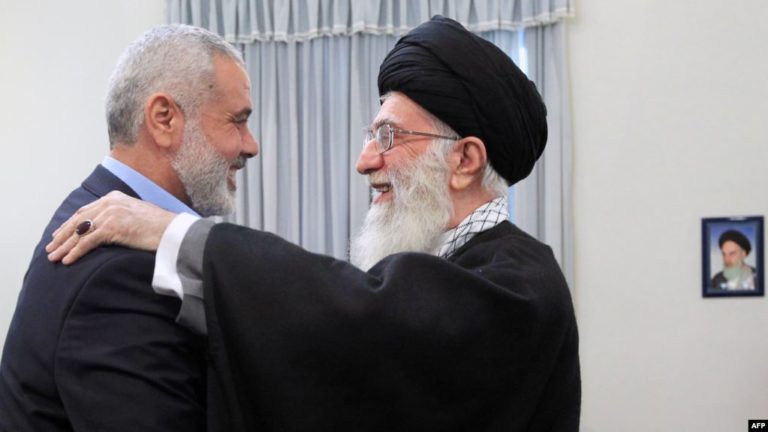
The Head of Hamas Political Bureau, Ismail Haniyeh together with the Supreme leader of the Islamic Revolution – (AFP)
Would Iran pave the way?
After making a change at the level of its political structure in early 2017, Hamas is currently making its way to Tehran easily, raising questions about the existence of any opportunity through which it may make it to Damascus too.
Khattar Abou Diab, Professor of international relations at the University of Paris and a geopolitics expert, said during a statement that Hamas has denounced the Israeli strike against Iran in Syria and certain military headquarters afterwards. Hence, Hamas is hoping to reach normalization under the umbrella of “unifying the axis of resistance.”
Abou Diab adds that Hamas currently needs Syria because it believes that if there is any pressure in Lebanon, then Syria will remain a safe place for the party. Therefore, the party is currently willing to stay there.
There has been no separation between Iran and Hamas, Abou Diad said, and highlighted that Tehran lamented Hamas because of the position it has taken at the beginning of the Syrian revolution
Iran is still supporting Hamas despite the less generous monetary funds the organization is providing. “We can say that in case Iran believes Hamas’s presence in Syria will serve its interests, then it should exert pressure on the Syrian regime, which is something that could be done in secrecy,” Abou Diab said.
“Al-Monitor” news website quoted an Iranian official on3 April 3, 2019 as saying that Iran has been mediating between the Syrian regime and Hamas since the beginning of 2017, noting that several meetings aiming to achieve this goal have hosted both leaders of Iran and Hamas.
The official added that the Syrian regime continues to recognize the withdrawal of Hamas leaders from Damascus in 2012, and settling down in Qatar and Turkey, in addition to the statements of some leaders of the pro-revolutionary movement, which represented a stab in the back.
However, the official explained that Iranian mediation and the mediation of the Lebanese “Hezbollah” alleviated Damascus’s attitude towards “Hamas.”
Russians are participating too
When addressing Iran’s contribution into resuming relations between Hamas and the Syrian regime, the Russian factor should not be ignored, for being a four-year actuator in Syria. It has become a key contributor into all developments taking place in the arena, especially as regards to Israel and its fears of the expansion of Iranian influence in the region.
Abou Diab believes that Hamas has a relationship with Russia, which is also involved in the issue of resuming relations with the Syrian regime, especially that Moscow disagrees with Tehran regarding some issues related to Israel, and can consider that the presence of Hamas would block common issues Russia is working on jointly With Israel.
On February 2019, Moscow hosted an extensive meeting bringing together all the Palestinian factions, including Hamas, without making any breakthrough as regards to the reconciliation file. On July 10, 2019, the Palestinian Ma’an News Agency quoted an official source in Hamas as saying that a delegation of the organization headed by the Deputy Head of the Political Bureau, Mousa Abu Marzook, will arrive to the Russian capital Moscow next week, to hold a meeting with Foreign Minister Sergey Lavrov and a number of officials in the Russian Foreign Ministry.
In the same vein, Abou Diab believes that the extent to which Iran and the Lebanese Hezbollah have gone in mediation to resume relations between Hamas and the Syrian regime is still unknown.
He said that all Hamas attempts to normalize the relationship have failed so far, noting that “the doors are closed to Hamas until the moment.”
Will Hamas return to Damascus?
Hamas relied heavily on the success and sustainability of Arab revolutions and the formation of an axis adopting the Palestinian cause, but those revolutions have been aborted quickly, especially in Egypt. Voices calling of normalization within the Arab regimes have become numerous, especially the Gulf, according to analyst Emad Abou Rouss, who confirmed that “Hamas” is trying to form or have a consensus with an axis opposed to normalization, which extends from Iran to Syria, Lebanon and Turkey. Therefore, it has resumed working to strengthen its relationship with Iran, believing that the organization won’t be lamented for any previous attitudes towards the Syrian regime facing the obstacles it has in its way.
Referring to resuming relations between Hamas and the Syrian regime in the future, Abou Rouss said that Hamas must be aware that any similar option with any party must follow two directions: First the benefit-driven by resuming relations, and second the position of the other side as regards to the issue of the Palestinian conflict.
Abou Rouss believes that currently both Iran and Russia are in control of Syria and its capabilities. The Syrian regime will not be of any benefit to Hamas, for it has no political or military weight upon which it could rely. Therefore, Hamas’s maintaining of relationship with Russia and Iran shall eliminate the organization’s need for the regime, which is thinking that Hamas has stabbed it in the back. The regime also believes that Hamas’ policy is unstable and will not benefit from any relationship with the movement, especially after consolidating its relationship with the Palestinian Authority, in addition to the ties it has with other factions supporting it,” he clarified.
For his part, political analyst Talal Nassar asked about the way Hamas will benefit in case relations were re-established with Damascus. He told Enab Baladi that the Syrian regime has came to an end, lost legitimacy and does not have any sovereignty over the Syrian lands.
Nassar expected that Hamas will not revive its relations with the Syrian regime at all until its total demise. He justified such stance saying, first, that the regime is worn out financially and economically and has nothing to offer to Hamas. Second, if Hamas restores relations with al-Assad regime, it will lose the Arab and Islamic incubator. On the other hand, Nassar believed that Hamas will be able to endure the suffocating siege and stay in tune with the pulse of the Syrian public.
Poll
In a poll conducted by Enab Baladi on its Facebook page, the participants’ views converged on the possibility of re-establishing relations between the Syrian regime and Hamas.
53 percent of the respondents, i.e. more than 1,700, expected the resumption of relations between both parties. Shaker Nassim believed that Hamas will restore the relationship with the regime as long as it receives support from Iran (which also supports the Syrian regime) at the present time.
Iyad al-Barazi supported the re-establishment of relations, which were not interrupted at all, from his point of view, since both the regime and Hamas received support from Tehran; while Nizar al-Mardoud considered that Hamas did not break its ties with the regime, but rather faked cutting ties with al-Assad when the movement leaders sensed at the beginning that the regime collapsed. However, soon things got back to normal between both parties.
As for 47 percent of the participants, they believed that the separation will continue, as the political ties will never be restored between both sides. Hence, Ahmed Jemi asserted that Hamas will fall if it agrees to reconcile with al-Assad.
Tawfik Youssef Qaddour also defended Hamas’s relationship with Iran and its insistence to receive support from the Iranian government as the Arab states have abandoned the movement. However, he considered that Hamas would not restore relations with the regime because the movement is aware that the regime “should not be trusted.”
if you think the article contain wrong information or you have additional details Send Correction
النسخة العربية من المقال
-
Follow us :
Most viewed
- 311 casualties among government forces and civilians in Syrian coast
- Rights organization documents government and civilian deaths in Syrian coast
- Al-Shibani: Syria is facing a hidden and declared war
- Ankara supports Damascus... Moscow abdicates responsibility for events in coastal region
- The Makhlouf dynasty: privilege, power, and wealth












 Al-Qassam Brigades, the military wing of Hamas Movement, during a military parade in Gaza - 2017 (Hamas)
Al-Qassam Brigades, the military wing of Hamas Movement, during a military parade in Gaza - 2017 (Hamas)





 A
A
A
A
A
A
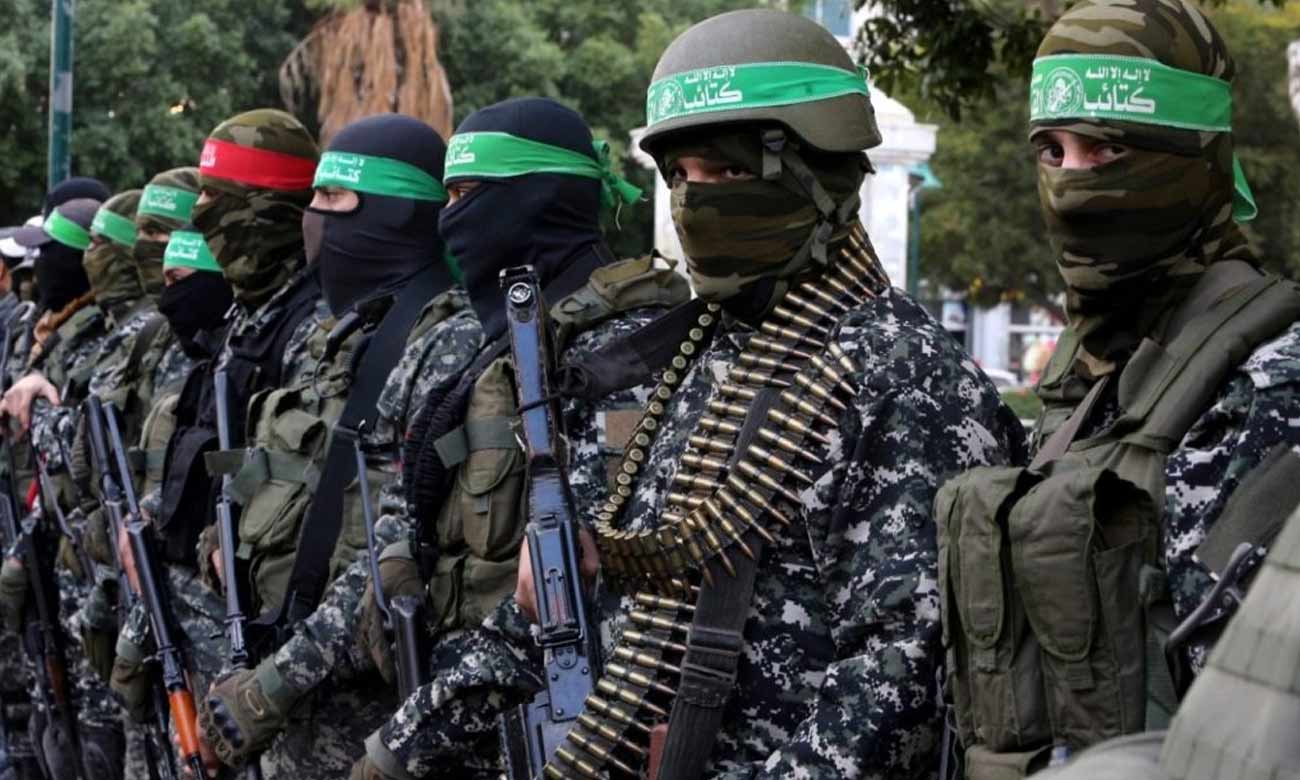


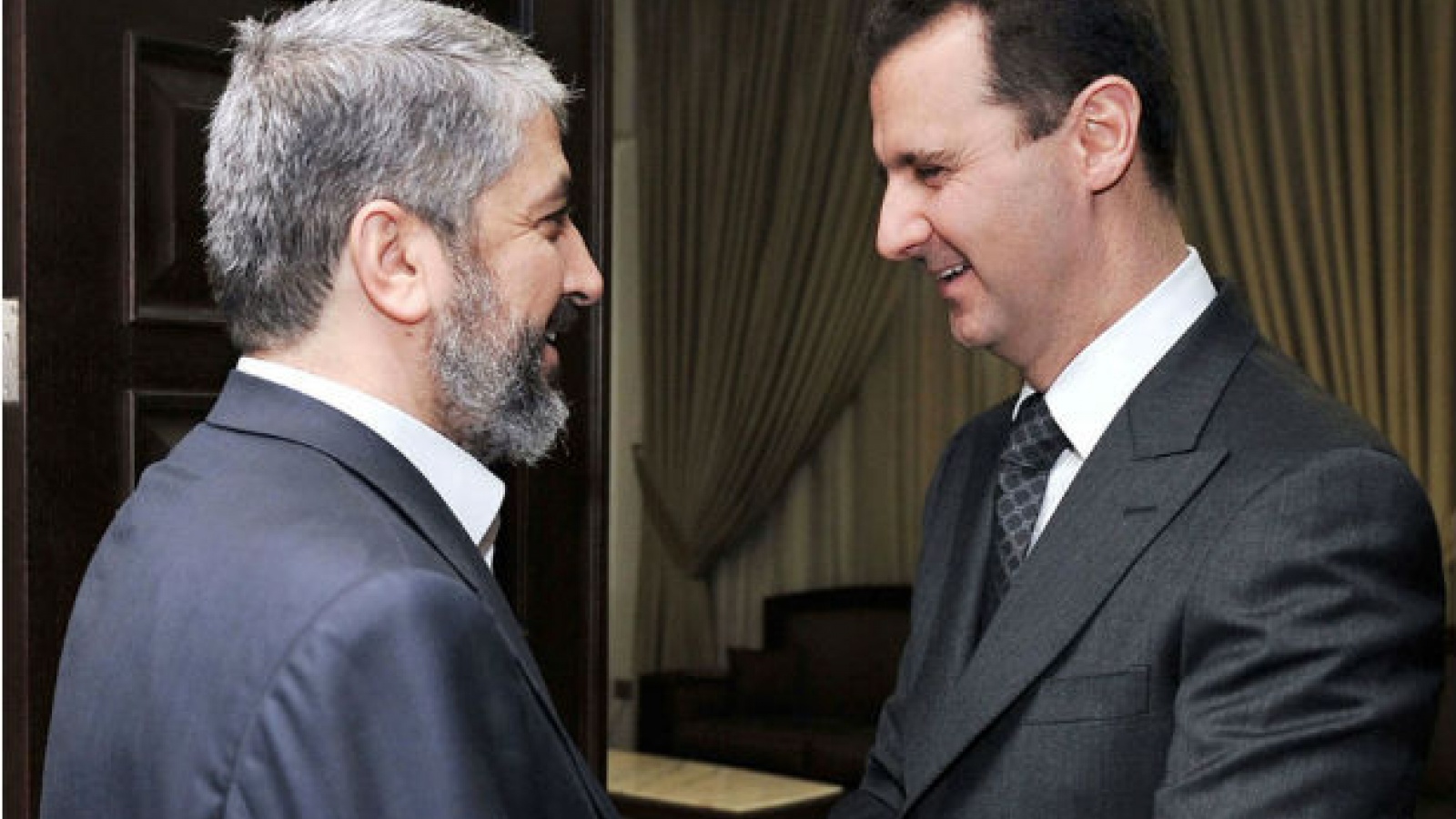
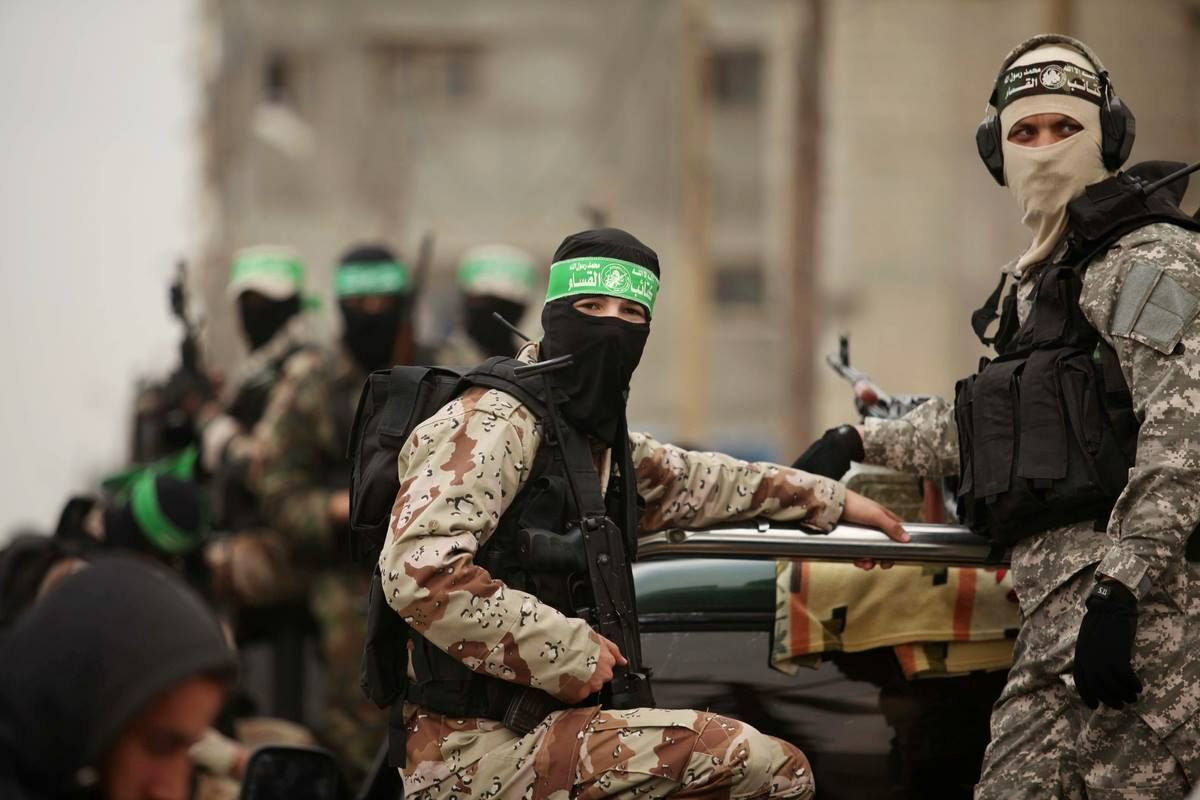


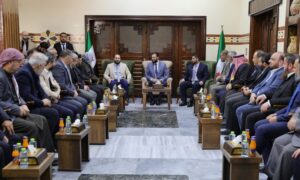
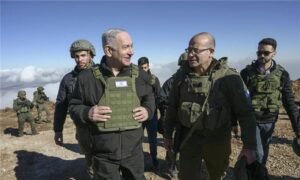
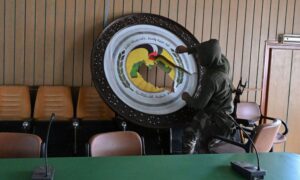
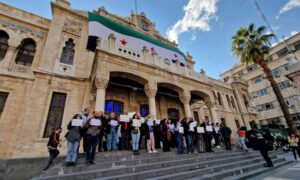
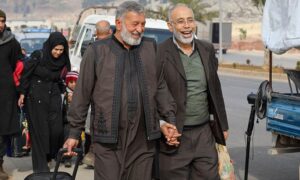
 More In-Depth
More In-Depth